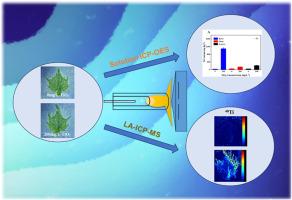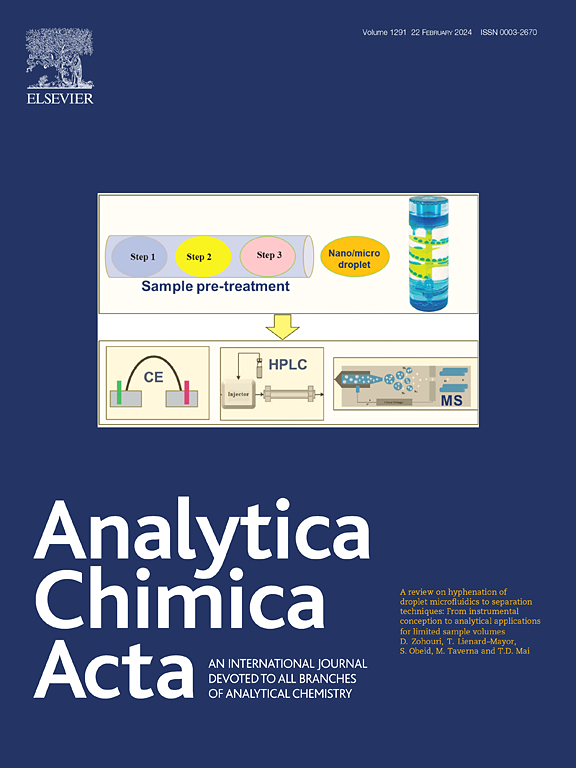Investigation on effects of TiO2 on cucumber seedlings using ICP-OES and LA-ICP-MS
IF 5.7
2区 化学
Q1 CHEMISTRY, ANALYTICAL
引用次数: 0
Abstract
With the expansion of TiO2 applications in various fields, TiO2 inevitably enters the soil, increasing the possibility of plant roots being exposed to high concentrations of TiO2. Therefore, it is important to study plant growth under TiO2 exposure conditions. In this study, the combination method of inductively coupled plasma emission spectroscopy (ICP-OES) and laser ablation inductively coupled plasma mass spectroscopy (LA-ICP-MS) was used to evaluate the effect of TiO2 on the content and distribution of nutrient elements in different parts of cucumber seedlings. The results showed that the low concentrations (50 mg/L, 100 mg/L and 200 mg/L) of TiO2 had gradually enhanced the growth of cucumber seedlings, while the high concentration (500 mg/L) of TiO2 had a significant inhibitory effect on the plant. The contents of elements (Ti, K, Ca, Mg, Mn, Fe, Zn, and Cu) in cucumber seedling roots, stems and leaves incubated with 200 mg/L TiO2 were determined by ICP-OES, and the results showed that the uptake of TiO2 increased the content of nutrient elements in the plant. High-resolution imaging of Ti, Ca, Mg, Mn, Fe, Zn, and Cu in roots, stems, and leaves using LA-ICP-MS showed that Ti accumulated mainly at the margins of the leaves. Ca, Mg, Mn, Fe, Zn, and Cu in the leaves were mainly concentrated in the main veins and lateral veins. By evaluating the content and distribution of elements in the plant with ICP-OES and LA-ICP-MS, it provides a new idea to study the mechanism of nanoparticles in the plant. It provides a theoretical basis for the correct use of nanomaterials, which is of great significance in promoting the sustainable development of agriculture.


求助全文
约1分钟内获得全文
求助全文
来源期刊

Analytica Chimica Acta
化学-分析化学
CiteScore
10.40
自引率
6.50%
发文量
1081
审稿时长
38 days
期刊介绍:
Analytica Chimica Acta has an open access mirror journal Analytica Chimica Acta: X, sharing the same aims and scope, editorial team, submission system and rigorous peer review.
Analytica Chimica Acta provides a forum for the rapid publication of original research, and critical, comprehensive reviews dealing with all aspects of fundamental and applied modern analytical chemistry. The journal welcomes the submission of research papers which report studies concerning the development of new and significant analytical methodologies. In determining the suitability of submitted articles for publication, particular scrutiny will be placed on the degree of novelty and impact of the research and the extent to which it adds to the existing body of knowledge in analytical chemistry.
 求助内容:
求助内容: 应助结果提醒方式:
应助结果提醒方式:


